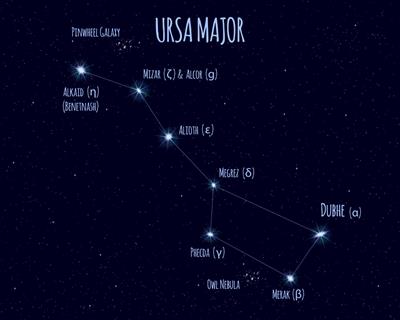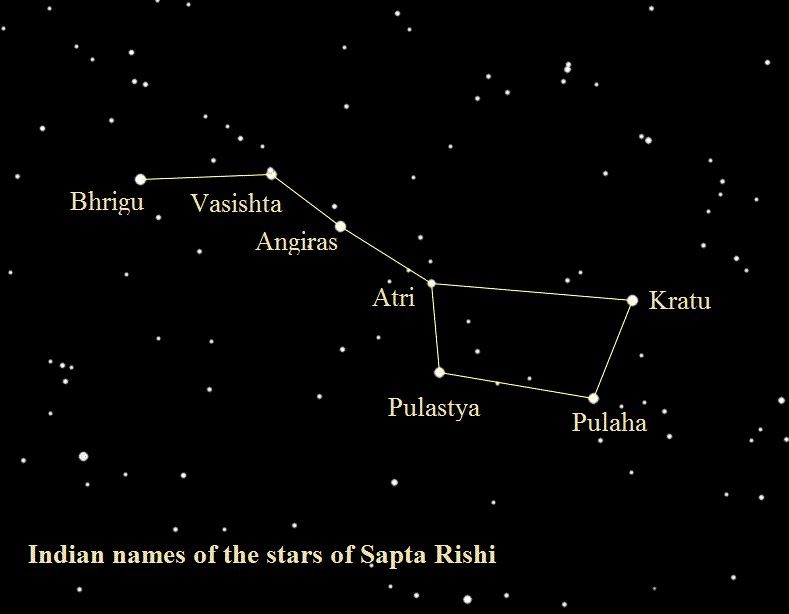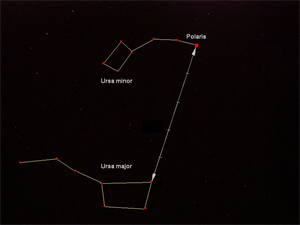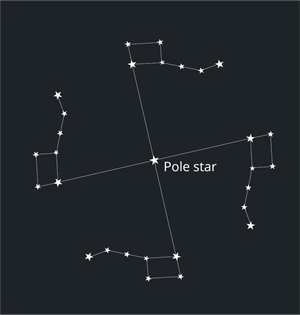
PUMPA - SMART LEARNING
எங்கள் ஆசிரியர்களுடன் 1-ஆன்-1 ஆலோசனை நேரத்தைப் பெறுங்கள். டாப்பர் ஆவதற்கு நாங்கள் பயிற்சி அளிப்போம்
Book Free DemoThe famous constellation called Ursa Major is visible during the early part of the night in summer.

Ursa Major constellation
The other names given to this constellation are
- The Big Dipper,
- The Great Bear or
- The Saptarshi
Appearance:
In this constellation, there are seven stars appearing in the shape of a ladle or a question mark. Out of these seven stars, three of them are in the ladle and four stars in the bowl.

Ladle-shaped constellation
Ancient stories:
Many mythological stories in the olden days were associated with constellations. According to ancient mythology, the seven well-known ancient Indian sages or rishis form the Saptarshi. They preserve the eternal knowledge of Vedas and explain it to people in every new age.
Many mythological stories in the olden days were associated with constellations. According to ancient mythology, the seven well-known ancient Indian sages or rishis form the Saptarshi. They preserve the eternal knowledge of Vedas and explain it to people in every new age.

Saptarshiconstellation
Finding pole star:
With the help of Ursa Major, the pole star can be located. Like pole star, the Ursa Major cannot be viewed from some points in the southern hemisphere.
- In summer, on a moonless night, the Ursa Major constellation is identified at the northern part of the sky.
- The two stars at the end of the Ursa Major constellation is then located.
- An imaginary straight line is extended towards the north direction, which leads to the pole star.

Position of the pole star from Ursa Major constellation
Even though the other stars move from east to west, the pole star remains stationary. This can be noted by the following.
- Ursa Major and the pole star is observed 3\ - 4 times at an interval of 2 to 3\ hours.
- The positions of the constellation at different time intervals are noted and drawn in a sheet.
- Finally, while comparing the positions, it is noted that the pole star does not move, whereas the Ursa Major moves around the pole star.

Locating the pole star from Ursa Major constellation
All the stars in the sky appear to move around the Pole star.
Reference:
https://upload.wikimedia.org/wikipedia/commons/c/ce/Ursa_Major_-_Ursa_Minor_-_Polaris.jpg
https://static.thenounproject.com/png/170218-200.png
https://upload.wikimedia.org/wikipedia/commons/3/3f/Saptarishi.gif